Veneers in Indonesia
Search and Compare the Best Clinics and Doctors at the Lowest Prices for Veneers in Indonesia

Find the best clinics for Veneers in Indonesia
With Medijump you can browse 11 facilities offering Veneers procedures in Indonesia. The cheapest price available is $96 in Bali. And for the cheapest price globally, prices start from $1 in Vietnam.
Veneers in Bali
Price: $ 96
Vietnam offers the best prices Worldwide
Price: $ 1
From 35 verified reviews
PT IndoVest Development, 05 August 2020
Covid Rapid Test. Result in 15min. including certificate. RP. 380.000.--- Thank you so much....
From 2 verified reviews
Jacqui van Niekerk, 08 January 2020
Dr Andhika, Dr Joshua and the team have done such an exceptional and amazing job. They are truly experts in their field and by far the very best and most professional dental centre. We highly recommend these lovely people.
From 2 verified reviews
Asep Ilyas, 26 March 2018
I had treatment when I was in Bali .Very professional and kind service, from reception to the dentist and the Hygienist. I would highly recommend. I'm absolutely fine with everything. All round great practice, very knowledgeable and friendly.
From 27 verified reviews
michael hardie, 02 April 2020
Fantastic friendly staff. Never experienced the normal anxiety that I feel when visiting dentist. Plus no pain at all.5 stars
From 108 verified reviews
Cody Macquarie, 22 September 2020
From admitted to discharge was great. Front office staff, nurses, doctors all had wonderful and caring attitudes. Facility is beautiful and clean, I had nothing to complaint about
From 46 verified reviews
sella marsilia, 15 September 2020
Tempatnya bersih, dokternya baik hati dan penyayang, alat2nya lengkap, dari semua dokter yg saya datangi, baru kali ini gigi saya ditangani dgn sgt baik. Krn saya punya masalah gigi yg susah ditangani selama ini. Recomen banget pokoknya! Dan yg terpenting dari semua penanganan yang sangat memuaskan ini..harganya masuk akal!
From 53 verified reviews
Muhammad Reza Ichsan, 02 September 2020
One of the best clinic in Kuta. Offered dental and aesthetic services
Bali 911 Dental Clinic, located in Denpasar, Bali, Indonesia offers patients Veneers procedures among its total of 44 available procedures, across 2 different specialties. The cost of a Veneers procedure starts from $320, whilst the national average price is approximately $265. There is currently a lack of information available on the specialists practicing at the Dental, and they are not accredited by any recognized accreditations institutes
Bright Smiles Bali Dental Centre, located in Denpasar, Bali, Indonesia offers patients Veneers procedures among its total of 46 available procedures, across 2 different specialties. The cost of a Veneers procedure starts from $416, whilst the national average price is approximately $265. There is currently a lack of information available on the specialists practicing at the Dental, and they are not accredited by any recognized accreditations institutes
From 99 verified reviews
gra cia, 12 September 2020
the place is large, comfortable to wait for a long time, my consultant, Ms. Wulan, is kind and friendly, listening to the tone of her speech 😁. Thank you so much mba wulan for ur kind, oh yes the puri doctor is friendly too! don't rush in when I want a consul and it's good. can't wait for next week for action at the poise 🥰
From 11 verified reviews
Yorri Farli, 15 August 2018
The service is friendly, doctors and assistants are good and friendly. His work is good and neat. young doctor temperature children renowned photographers. 🙏 Thank you elite dental and aesthetic clinic.
- Home
- Indonesia
Compare Before & After Photos of _procedure_photos.phpVeneers
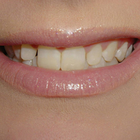

Front view
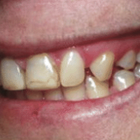
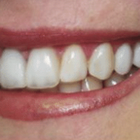
Half-side view
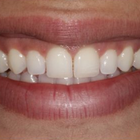
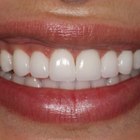
Front view
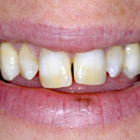
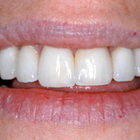
Front view
WHY US?
At Medijump, we're making medical easy. You can search, compare, discuss, and book your medical all in one place. We open the door to the best medical providers worldwide, saving you time and energy along the way, and it's all for FREE, no hidden fees, and no price markups guaranteed. So what are you waiting for?

Free

Best Price

Widest Selection

Risk-Free
What you need to know about Veneers in Indonesia

Dental veneers are thin covers that are attached to the surface of teeth to enhance their appearance. The non-invasive dentral procedure is previously popular among those with damaged or discolored teeth. Nowadays, however, the procedure is seen as the ideal method of achieving the ‘perfect smile.'
Veneers can be used to hide uneven, misaligned or simply imperfect teeth. The veneers are cemented over the existing teeth and fixed into place – there are two main types of veneer; Porcelain and Composite. Porcelain veneers are more expensive and appear more natural, being made in a laboratory so require multiple visits. There is often the need to alter the existing teeth, removing some of the mass. Composite veneers are made of the same materials used for cavity fillings. They can usually be made quickly, and are sculpted directly on the teeth instead of in a laboratory. Thus allowing the procedure to be done in a day.
What does a Veneers Procedure Involve?
Veneers are used primarily for aesthetics. This type of treatment procedure is perfect for people who have gaps in their teeth, stains, as well as people who may have chipped a tooth. Veneers are custom-made shells designed to fit the shape of your teeth and to be attached to your front teeth to improve the size, shape, color, and length.
Two main types of veneers are:
- Composite Veneer - this type can be created by your dentist on the same day and directly applied to your teeth. You will only need a single appointment to complete the procedure.
- Porcelain Veneer - this type is manufactured in a laboratory. Opting for a porcelain veneer will require you to have two appointments. First, is to prepare your teeth (enamel removal) and mold a model of your teeth to be created in the lab. The second is to finally cement your veneers onto your teeth.
The most commonly used type of Veneer is the Porcelain Veneer as it appears more natural and can resist stains better than composite veneers. Besides the two main types of veneers, some dentists may also offer no-prep veneers. These may include specific brands of procelain veneers like Vivaneers and Lumineers. They are less invasive to apply since the layers of tooth under the enamel aren't removed.
In terms of anesthetics, local anesthesia is not usually required while undergoing the whole procedure. However, depending on how you handle pain and discomfort, you may request to receive local anesthesia or sedation.
Aside from giving you a pleasing smile, veneers are resistant to staining and offer the best fix to broken or damaged teeth.
How Long Should I Stay in Indonesia for a Veneers Procedure?
This type of procedure is an outpatient treatment, meaning you may be able to go home after undergoing the procedure. However, you will be required to do a follow-up check-up with your dentist to assess the placement of your veneers and in most cases, the procedure has to be carried out over 2 separate occasions, just a day or two apart. Since this is a non-invasive treatment, stitches are not required, but you will be required to stay in Indonesia for at least a few days.
What's the Recovery Time for Veneers Procedures in Indonesia?
There is actually no recovery time after the placement of your veneers. You can also return back to your daily routines including exercise immediately after your trip. As for the enamel removal, you may experience some mild discomfort for about a week. It is best that you avoid very hot or cold foods, including hard, chewy or crunchy food. When your sensitivity wears off, you can return to your normal dietary habits.
What sort of Aftercare is Required for Veneers Procedures in Indonesia?
Once your dental veneers have been placed and you have completed the whole procedure, you should commit yourself to good oral hygiene, regular visits to your dentist and a good healthy lifestyle. Dental Veneers can last beyond 10 years now, however, just like your natural teeth, veneers are also still susceptible to damage. This is why aftercare is very important to help with the longevity of your new teeth.
What's the Success Rate of Veneers Procedures in Indonesia?
Over the past years, many studies have reported that over 91% of people who have had dental veneers experienced highly positive results. However, potential risks and side effects after undergoing this procedure are a possibility. Just like any other dental restoration, dental veneers can have some side-effects, for example:
- Tooth sensitivity - since this procedure will require the removal of some enamel, your teeth will become slightly sensitive, following the placement of your veneers.
- Response from gum tissues - your gum tissue might take some time to adjust to your newly placed veneers. Expect to have some minor inflammation and/or discomfort in your gums.
- Risk of trauma - once your teeth’s enamel is removed, it will become more sensitive, thus it will be even possible for the pulp within your teeth to die.
- Possible Issues with placement - it's possible for your teeth to have issues with decay or chipping along the outer portion of your veneers. Gum irritation may also be possible. Other problems may include rough-edged veneers and overhanging veneers.
- Overall Discomfort - experiencing some discomfort after the procedure is to be expected. If you are particularly sensitive, it is advisable that you take an over the counter medication to help you relax and treat your pain.
Are there Alternatives to Veneers Procedures in Indonesia?
You also have to be aware that this type of treatment option is not for everyone. If you are not a good candidate to undergo the procedure, note that there are still possible alternatives that will be suited for you. These alternatives may include:
Orthodontics - if you have severely crooked teeth or malocclusion, dental veneers are not for you. You may want to consider a more comprehensive orthodontic procedure to treat your case.
Dental crowns - these are quite similar to dental veneers. These are also custom-made to match the shape of your teeth. However, unlike veneers, a crown extends all the way around your tooth, meaning your dentist will remove a large portion of your dental structure. These crowns are perfect for patients who have considerable damage that affects the strength and structure of their teeth.
Bonding - often called composite veneers. This is typically for patients with an insufficient amount of tooth enamel.
Whilst the information presented here has been accurately sourced and verified by a medical professional for its accuracy, it is still advised to consult with your doctor before pursuing a medical treatment at one of the listed medical providers
No Time?
Tell us what you're looking for and we'll reachout to the top clinics all at once
Enquire Now

Popular Procedures in Indonesia
Prices Start From $1

Prices Start From $1

Prices Start From $48

Prices Start From $1

Prices Start From $1

Prices Start From $1

Prices Start From $11

Prices Start From $45

Recommended Medical Centers in Indonesia for Veneers

- Interpreter services
- Translation service
- Religious facilities
- Medical records transfer
- Medical travel insurance
- Health insurance coordination
- TV in the room
- Safe in the room
- Phone in the room
- Private rooms for patients available

- Interpreter services
- Translation service
- Religious facilities
- Medical records transfer
- Medical travel insurance
- Health insurance coordination
- TV in the room
- Safe in the room
- Phone in the room
- Private rooms for patients available

- Interpreter services
- Translation service
- Religious facilities
- Medical records transfer
- Medical travel insurance
- Health insurance coordination
- TV in the room
- Safe in the room
- Phone in the room
- Private rooms for patients available

- Interpreter services
- Translation service
- Religious facilities
- Medical records transfer
- Medical travel insurance
- Health insurance coordination
- TV in the room
- Safe in the room
- Phone in the room
- Private rooms for patients available

- Interpreter services
- Translation service
- Religious facilities
- Medical records transfer
- Medical travel insurance
- Health insurance coordination
- TV in the room
- Safe in the room
- Phone in the room
- Private rooms for patients available

- Interpreter services
- Translation service
- Religious facilities
- Medical records transfer
- Medical travel insurance
- Health insurance coordination
- TV in the room
- Safe in the room
- Phone in the room
- Private rooms for patients available

- Interpreter services
- Translation service
- Religious facilities
- Medical records transfer
- Medical travel insurance
- Health insurance coordination
- TV in the room
- Safe in the room
- Phone in the room
- Private rooms for patients available

- Interpreter services
- Translation service
- Religious facilities
- Medical records transfer
- Medical travel insurance
- Health insurance coordination
- TV in the room
- Safe in the room
- Phone in the room
- Private rooms for patients available

- Interpreter services
- Translation service
- Religious facilities
- Medical records transfer
- Medical travel insurance
- Health insurance coordination
- TV in the room
- Safe in the room
- Phone in the room
- Private rooms for patients available

- Interpreter services
- Translation service
- Religious facilities
- Medical records transfer
- Medical travel insurance
- Health insurance coordination
- TV in the room
- Safe in the room
- Phone in the room
- Private rooms for patients available
Veneers in and around Indonesia
About Indonesia
Indonesia is a country in Southeast Asia, located between the Indian and Pacific oceans. It is the 4th most populous country in the world with over 260 million inhabitants. The country consists of more than 17,000 islands, which makes it the largest island country in the world. It is packed with beaches, volcanoes, tropical jungles, exotic animals, and culture. This wonderful country invites any adventurous traveler to explore its dramatic landscape. Today, Indonesia is also a potential medical tourism destination. Although it is not as popular as its neighboring countries such as Malaysia, Singapore, and Thailand in terms of medical tourism, the country actually houses numerous excellent medical centers. Many of the medical practitioners are well-trained and can communicate in English. The medical centers are equipped with cutting-edge technology and offer a wide range of affordable treatments. Some of the most sought-after treatments are blepharoplasty, liposuction, and breast augmentation.
Popular Parts of Indonesia
From busy metropolises, and sparkling beaches, to tropical rainforests, tourists will be able to find anything they want here.
- Jakarta is the capital of Indonesia. It is the melting pot of Indonesia's many cultures because thousands of people from all over the country live and work here. The city is home to numerous museums, some of which are the biggest in the country, such as the National Museum of Indonesia and the Museum of Modern and Contemporary Art in Nusantara (MACAN). The most famous landmark in the city is the National Monument or Monas which commemorates the Indonesian struggle for independence. The city also has a unique old city known as Kota Tua, where tourists can find many interesting colonial buildings.
- Bali is Indonesia’s main tourist destination which attracts more than 15 million tourists every year. The island is packed with striking beaches, diverse marine life, jungle-covered mountains, lively nightlife, opulent culture, and spiritual energy. Almost every beach on the island is worth visiting, particularly Seminyak, Nusa Dua, Sanur, and Padang Padang Beaches. You can visit the Pura Tanah Lot and witness its scenic beauty or go to Ubud Monkey Forest to watch the monkeys and explore the sacred temples.
- The Special Region of Yogyakarta is the center of Java’s traditions and it is the only region in Indonesia that officially recognizes the monarchy. The region is home to numerous ancient buildings and temples. Visit Borobudur temple in the early morning to watch the sunrise, and watch the sunset from Prambanan or Ratu Boko temples. Tourists who are eager to learn about the region’s past can wander around Taman Sari, a park of palaces, pools, and waterways belonging to the sultan.
- Medan is the largest city on the island of Sumatra and it is a gateway to the western part of Indonesia as well as a busy trading city. The most important attraction in Medan is Lake Toba which is one of the natural wonders of the world. It is a massive crater lake with an island in its center. The island, named Samosir, is almost as big as Singapore. This enormous lake has a depth of 450 meters, making it more like an ocean rather than a lake. The clear lake with picturesque mountains in the background gives an incredible view that will leave anyone in awe.
- Bandung is widely known as Parijs van Java or the Paris of Java because of its resemblance to Paris and European cities. Located on a river basin surrounded by volcanic mountains, it has a significantly cooler temperature than any other part of Indonesia. The city is a weekend gateway for people from the surrounding cities and it is popular for its delightful food, fashionable boutiques, creative arts, and lush green spaces. The city is filled with Art Deco, Neoclassical, and Gothic buildings such as the Savoy Homann Hotel and De Vries Building.
Weather and Climate in Indonesia
Indonesia experiences an entirely tropical climate. The average temperatures can vary based on the area. Coastal areas have an average temperature of 28 °C, the inland and mountain areas have an average of 26 °C, and the higher mountain areas have an average of 23 °C. There are two seasons in the country, but the seasons can start differently in each region. Generally, June to October is the dry season and November to March is the rainy season. The dry season is influenced by the Australian continental air masses and has a slightly cooler temperature than the rainy season. Tourists can expect mostly sunny days, but there will be some short rain showers. The rainy season can be very humid, and wet, and has a significant amount of rain.
Getting Around in Indonesia
Indonesia is well-connected by airports in almost every region. However, the largest airports are Soekarno-Hatta International Airport in Jakarta and Ngurah Rai International Airport in Bali. Both airports serve domestic and international flights to major cities around the globe. There are budget airlines in almost every airport, including Air Asia, Citilink, and Wings Air. Domestic flights can be rather expensive but will make traveling around the cities a lot easier.
Getting around the islands of Java and Sumatra can easily be done by trains operated by PT. KAI. There are 5 classes of trains: economy, business, executive, priority, and sleeper. The economy class can be a little uncomfortable and crowded, but tourists can get around several cities for as low as $4. Since the country is an archipelago, tourists can also travel from one island to another by ferry boats (long-distance) and speed boats (short distances such as Bali to Lombok).
Most of the cities will have their own mode of transport. The most common mode of transport is taxis and buses. Taxis are normally metered, but some drivers refuse to use the meter and force tourists to pay a fixed fare. Tourists should avoid riding these kinds of taxis and always insist on using the meter. The most reliable taxi companies are Blue Bird and Express. Bigger cities like Jakarta have MRT, LRT, and KRL (local trains).
Tourist Visas in Indonesia
Citizens of 170 jurisdictions can visit and stay in Indonesia for up to 30 days. Visa on arrival is available for 68 countries including Japan, the United Kingdom, and the United States. Nationals not listed in the visa exception agreement and visa on arrival need to obtain a visa before entering the country. It is advisable to check at your nearest Indonesia Embassy or Consulate for the visa policy. All visitors will need to have a passport valid for at least 6 months and a valid return ticket.
Additional Information
- Local Currency: The local currency is Indonesian Rupiah (Rp) and $1 will get you approximately Rp14.000.
- Money & Payments: ATMs that accept international cards are widely available in many cities. Credit cards are accepted in most established restaurants and hotels. If you are planning to visit small towns, it is advisable to carry some cash. Tipping is not essential but will be highly appreciated.
- Local Language: The official language is Bahasa Indonesia and people in major cities and tourist areas will speak and understand English.
- Local Culture and Religion: Most of the population follows Islam, but there are small groups of Hindus, Christians, Buddhists, and Confucianism. It is important to know that Indonesian people are friendly and conservative. Avoid wearing revealing clothes except on the beach.
- Public Holidays: Indonesia celebrates numerous national and religious holidays such as Independence Day, Eid Mubarak, Christmas, Vesak, and Nyepi.
Popular Searches
- Plastic Surgery in Thailand
- Dental Implants in Thailand
- Hair Transplant in Thailand
- Breast Augmentation Thailand
- Gastric Sleeve in Thailand
- Gender Reassignment Surgery in Thailand
- Laser Hair Removal in Bangkok
- Botox in Bangkok
- Dermatology in Bangkok
- Breast Augmentation in Bangkok
- Coolsculpting in Bangkok
- Veneers in Turkey
- Hair Transplant in Turkey
- Rhinoplasty in Turkey
- Stem Cell Therapy in Mexico
- Rhinoplasty in Mexico
- Liposuction in Mexico
- Coolsculpting in Tijuana
- Rhinoplasty in Korea
- Scar Removal in Korea
- Gastric Sleeve in Turkey
- Bone Marrow Transplant in India
- Invisalign in Malaysia
- Plastic Surgery in the Dominican Republic
- Tummy Tuck in the Dominican Republic
- Plastic and Cosmetic Surgery in Poland
- Rhinoplasty in Poland
- Hair Implant in Poland
- Dental Implants in Poland
- IVF in Turkey










